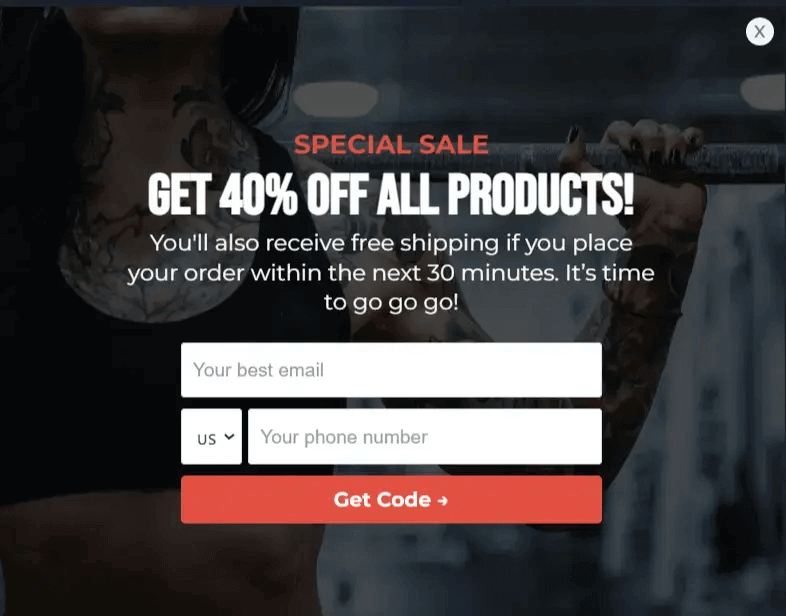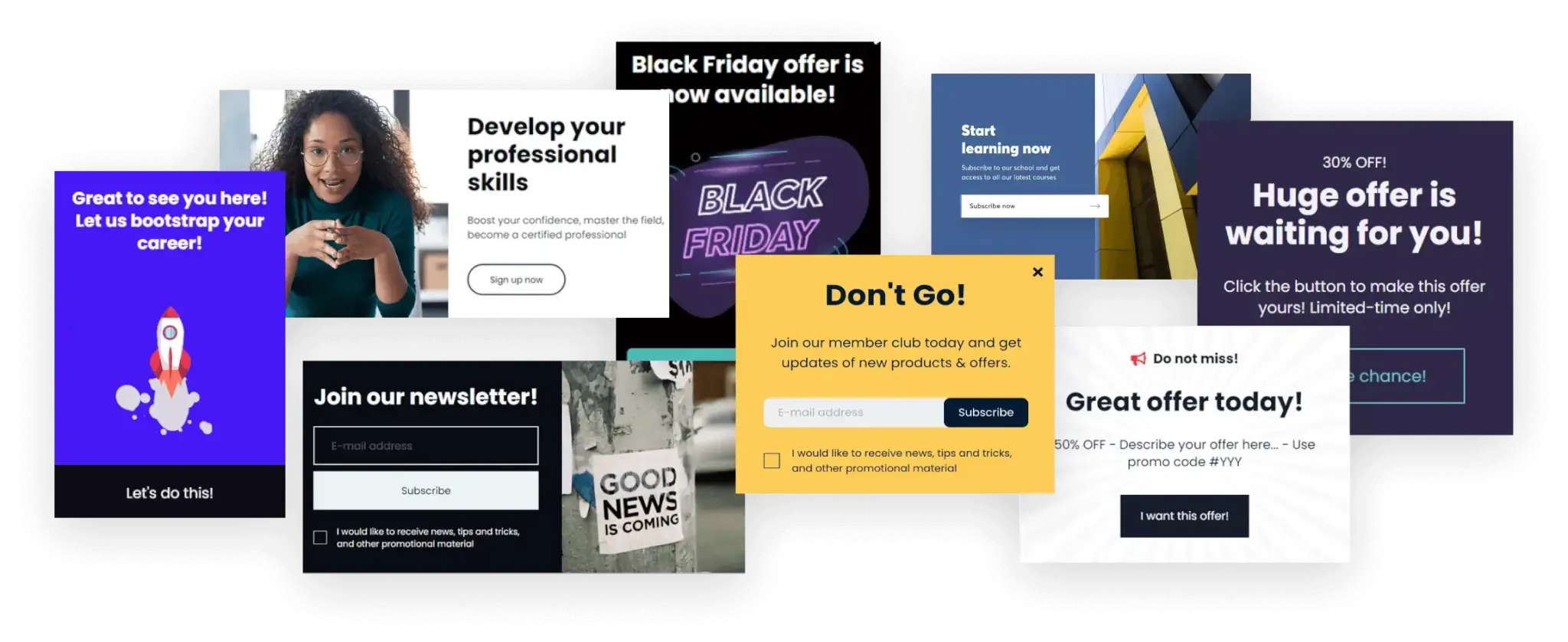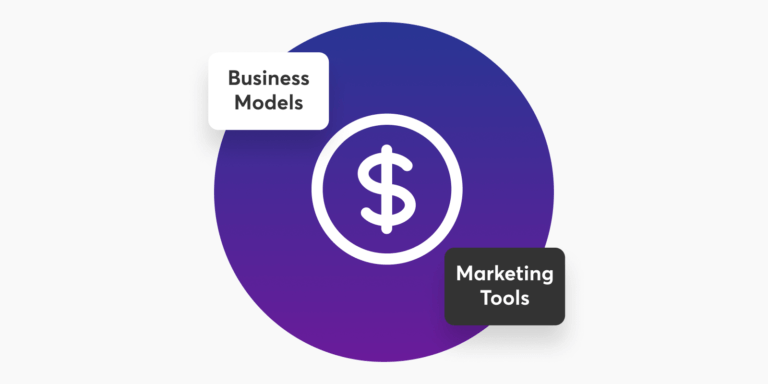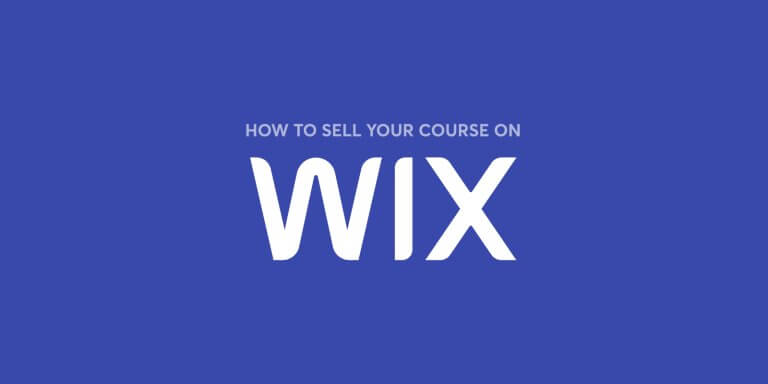Table of Contents
Black Friday shopping is the perfect time to put your business out there using the most innovative offers and partnerships you can think of.
In the past, I’ve always found myself rushing at the last minute, either waiting on budget approvals or struggling to figure out what would attract our target market. Such poor preparation left me with little time to create compelling offers. This also meant I missed out on quite a few opportunities to fully capitalize on the biggest holiday shopping event of the year.
So, I learned the hard way that preparing early for Black Friday is key to a successful campaign.
Now, I see how starting early gives me a chance to gather insights, secure resources, and craft promotions that truly resonate with potential customers, ensuring we maximize our results. I’m ready to share my best Black Friday business strategies from campaigns that were successful and some that failed.
Why Black Friday still matters in 2025
I’ll walk you through a list of the advantages of using these unique campaigns so you can decide if they help with your overall goals:
💡 Here’s a note on when a Black Friday might not be right for you.
If your brand is known for sustainability, ethical practices, or quality over quantity, aggressive discounting might conflict with these values. Participating in Black Friday sales might seem inauthentic or inconsistent with your brand’s messaging. Likewise, for businesses heavily reliant on full-price sales to maintain profitability, the risk of revenue loss from steep discounts might outweigh the benefits.
Start with strategy, not just discounts
People tend to connect Black Friday with lower prices. The success of your Black Friday campaign shouldn’t rely on how big the offer was, though.
When you’re price-driven, you risk eroding margins and devaluing your brand. That’s why strategy matters more than rushing into discounting your products and services. Next is where to truly start.
Define clear goals for sales and growth
Goals like an increased average order value, a set number of new customers, or the opportunity to bring back lost customers are good starter points.
Selling clothes? You might want to drive a 20% increase in new customers.
In SaaS? Try to hit a revenue goal of 15% to guide your marketing efforts and establish a clear target to measure and compare to.
Audit your margins and ideal customer profile
You’ll know if a Black Friday campaign is a fit for your business in the first place when you look at your profit margins for each product.
Let me walk you through the following example so you can better understand where you already stand.
Say you’re selling high-end headphones on a 30% margin. The Black Friday shopping season comes around, and you consider a 40% to keep up with competitors. That would hurt your profitability, but it doesn’t mean you can’t reach your ideal customers during this time, either.
Instead, consider rewards that won’t negatively impact revenue like extended warranties or exclusive freebies. These are ideal for increasing value for buyers.
Speaking of buyers, now’s also the perfect time to note down your ideal customer profile.
Choose the right offer types for your business
Stop looking at random popular Black Friday campaigns.
Think of what would work for your specific business and how you can stand out in your space beyond it all.
For instance, when selling subscription boxes, you might succeed with a simple “first month free” deal to motivate new sign-ups. This obviously doesn’t work for a fashion brand that could instead opt for promoting limited-edition bundles to create urgency.
Plan ahead with this Black Friday campaign timeline
Doing some planning for your Black Friday campaign is a must, and you need to have that plan ready months before the actual event.
In the last few years, Black Friday has moved from being just a day-long event to over a month long. Consumers are starting as early as the first week of November. They are also more purposeful about it—price comparisons, reading reviews, and waiting for deals personalized to their habits.
Alex Alexakis, Founder at Pixel Chefs
I’ve got just the right Black Friday campaign timeline outlined for you to use as a checklist and still have plenty of time for all preparations.
90 days out – research and budget
I’ve already mentioned starting with setting your goals, but I also want to highlight how important having a clear budget early on is. The costs will help you later plan out what discounts or freebies you can offer and which marketing channels you can invest in.
Three months ahead of the big day is also great for fine-tuning your messaging. What does this mean? You’ll have to take a week or two to A/B test different formats and positioning types with your ideal customer base.
60 days out – inventory, pricing, and positioning
Pick your best items based on current demand, so you can already decide roughly what discounts you want for each. I’m emphasizing “roughly” because you can later tweak the offer for a last-minute one depending on how the busiest shopping day progresses.
Now’s the time to secure your inventory and decide on the final prices with suppliers.
Avoid running out of products by focusing on what generally sells well, as well as any extra items you want to offer as free gifts. For instance, if you sell kitchen appliances, order those air fryers that tend to sell out fast or those pots and pans you ran out of last year.
30 days out – decide on the final offers and creative resources
Imagine it’s already one month before Black Friday.
You should finish your offers so that no unexpected issues arise in the upcoming weeks. You also need to optimize your website to handle all the extra traffic. In fact, the earlier you start with this, the better, since you’ll have a smooth-running website the whole year.
This is also the time you start working on your marketing campaigns. One month is plenty of time to set up and even refine your campaigns. At least as long as you didn’t skip the positioning testing step above.
Black Friday shopping week – get things done and keep an eye on the results
With all the right tests and preps behind, you’re 100% ready to launch your campaigns without the usual worries.
Don’t sit back though. Monitor sales, website performance, and customer feedback so you can fix campaigns or website bugs to keep shoppers.
Post-sale – follow-up and retargeting
Of course, your efforts don’t just end on the big day. I recommend scheduling post-Black Friday follow-ups and customer retention strategies as another big pillar to long-term business success.
Try following up with customers by setting up personalized email campaigns, thanking them for their purchase, and offering exclusive Black Friday promotions.
Here’s an example from Bird & Blend Tea Co.

Engaging content, such as Christmas gift guides or tutorials on how to use their purchased products, can keep customers interested. Need more? You can use social media to showcase customer testimonials or user-generated content to enhance brand loyalty and encourage repeat business.
Offer ideas that drive sales and loyalty
It pays to stand out. Always. Use the following creative Black Friday ideas to drive more sales this year and retain shoppers.
Bundle deals, BOGO offers, and a tiered discount system
Not ready to discount? Try a bundle like “Buy one item and get another for 50% off”.
This could increase your average order value and make deals more attractive, especially for regular buyers. Tiered discounts also push shoppers to spend more, such as “Save 10% on $100, 20% on $150, and 30% on $200+.”
Early access, early bird deals, and VIP-only promos
Reward your best customers with early access to special deals or try something different and organize a special event like a live webinar or community meetup on this day. This is a quick solution if you want to stand out and even create some buzz around how your brand prioritizes community and education on this day.
Cause-based or values-aligned promotions
More shoppers want their purchases to make a difference and support a cause they believe in. Consider donating a portion of Black Friday sales to a relevant charity and communicating this to motivate buyers and showcase your brand’s values.
Launches, limited drops, and exclusives
Create excitement with product launches or limited-edition releases timed for the Black Friday season for both online shoppers and brick-and-mortar store visitors. A sneaker company could unveil an exclusive colorway only available on this day. Limited stock builds urgency and makes customers feel special, driving faster purchasing decisions.
Free gifts, upsells, and cart incentives
Freebies should complement a purchase (eg like a free phone case with a smartphone). People can and should see these as an opportunity to get more for less or at a better price.
Upselling via extended warranties or premium services you promote during checkout also adds value. On the same cart checkout, consider highlighting limited-time discounts, free shipping, or the bundle deals mentioned above.
Black Friday marketing channels to activate
You don’t have to be everywhere at once, just choose your channels wisely.
Email campaigns with segmentation and reminders
Emails spark curiosity, but they wouldn’t work without proper segmentation. Always divide your email list based on customer behavior, purchase history, and preferences. You can then tailor your messages to each segment, offering personalized recommendations and exclusive deals that resonate with them.
I’ve also tried countdown campaigns in the past, but while they do increase urgency, I’m not a big fan of “forcing” this urgency onto my email list. I’d rather prolong the offer for a couple of extra days (your competitors and even major retailers probably won’t) or leverage existing abandoned carts to send reminders during the sale period.
💡 Learn how to sell courses effectively using email marketing.
Social media campaigns and influencer partnerships
Black Friday calls for quick buzz. Use social media platforms to create buzz, run promotions, and engage directly with your customers. Turn to social media for teaser campaigns, countdowns, and behind-the-scenes content.
Collaborate with influencers to expand your reach and enhance credibility.
Here’s an Instagram post example the Unblinded Mastery team used to promote a past Black Friday offer.

For more credibility, consider working with micro-influencers. Compared to bigger influencers, these have smaller yet highly engaged audiences. Their close connection with followers often leads to higher engagement rates, making their endorsements feel more genuine and impactful.
These influencers can build authentic relationships with their audience, which can significantly boost your brand’s visibility and trustworthiness.
Collaborating with influencers for product reviews, unboxing videos, or tutorials can provide valuable social proof and effectively highlight your product’s benefits. Implementing affiliate marketing strategies by offering influencers commissions on sales through unique discount codes or affiliate links motivates them to actively promote your products.
Gymshark, for instance, partners up with influencers of all kinds every single year.

Paid ads and retargeting
Paid ads on platforms like Facebook and Google can drive more traffic on that specific day. Invest in paid search and social ads targeting shoppers specifically looking for deals. Use retargeting to follow up with visitors who browsed but didn’t buy, reminding them of items left in their carts or limited-time offers. Dynamic ads showcasing personalized products can drive conversions more effectively.
SMS and push notifications
SMS and mobile push notifications cut through the noise to deliver instant, direct messages. Send exclusive coupon codes or flash sale alerts to subscribers for immediate impact. A limited-time “one-hour-only” deal announced via SMS can generate quick spikes in traffic and sales.
On-site promotions, pop-ups, and banners
Use non-intrusive pop-ups where relevant, but avoid bombarding visitors with pop-ups as soon as they land on your site. Instead, I always use only exit-intent pop-ups to capture the attention of Black Friday shoppers who are about to leave, offering them a discount or other incentive to stay.

Make sure your website can handle the rush
This is valid for any time, not just Black Friday, as buyer rushes can pop up at any point when you’ve got a cool offer or a lot of buzz around your brand.
Load testing, mobile UX, and speed optimization
Load testing simulates the massive traffic surge expected on Black Friday to identify problematic areas before they cause crashes. Mobile UX optimization is just as important, as over half of shoppers now buy on mobile devices. You can improve speeds by compressing images and ensuring pages load in under 2 seconds. This is a matter for your developers to handle, though.

Conversion boosts
Get more conversions by mimicking urgency through countdown timers, highlighting the time left for deals. For example, a “Sale ends in 3 hours” banner.
Exit-intent pop-ups come in to capture leaving visitors by offering an extra 10% off for completing their purchase.
Update product pages and add social proof
Don’t forget to optimize your product pages and other landing pages. High-quality images, detailed descriptions, and real customer reviews help convince visitors to buy. This is a must since shoppers will likely consult all offers on your website, even if something’s not part of the special Black Friday campaign.
SEO (Search Engine Optimization)
Optimize your SEO to attract organic traffic during the sales window. Implement structured data (schema) markup so search engines display rich snippets with prices and ratings directly in search results. Craft keyword-rich meta titles and descriptions like “Black Friday 2025 Deals on Electronics. Up to 50% Off.” to improve click-through rates and drive more shoppers to your site.
Tools and platforms to support your campaign
I never do it all alone, but I also don’t always need an extra person to handle the campaigns when I have the right tools at hand. Quite a few options to mix and match, though.
Ecommerce platforms
An ecommerce platform provides a single go-to system to manage high traffic, secure transactions, and create a smooth customer experience. It can also support your marketing efforts with tools for email campaigns, social media promotions, and discount codes or bundles.
Two common options to pick from here.
Email marketing tools
There are some email marketing tools I recommend based on different core priorities.
Pop-up and landing page builders
Privy helps capture email leads and reduce cart abandonment with targeted pop-ups and exit offers.
OptinMonster offers advanced personalization and exit-intent technology to convert more shoppers by displaying timely messages like “Don’t miss our Black Friday deals”.
Analytics tools
Among the best options, Google Analytics 4 (GA4) tracks user behavior and conversions to inform your decision-making. Hotjar provides heatmaps and session recordings to understand customer interactions visually, helping optimize your site. Triple Whale integrates sales and marketing data into one dashboard, giving you real-time insights into your Black Friday campaigns’ financial impact.
An online course platform to create, market, and sell courses
By providing key functionalities catered to both ecommerce and educational products, LearnWorlds can become your go-to platform if you’re looking to create promotional campaigns far beyond just Black Friday, particularly in the education sector, or if you’re a creator.
LearnWorlds gives you plenty of features to create impactful learning experiences and sell your content:

What to do after Black Friday ends
Often, the most time-consuming part of a Black Friday campaign is everything that happens after. Use the steps below to bring more clarity to what you’re doing after this busy shopping season.
Send thank you and follow-up emails
Show your appreciation by sending personalized thank-you emails to customers, reinforcing their positive experience. Follow up with recommendations based on their purchases. To boost repeat sales, a skincare brand might suggest complementary products or tutorials on how to use their new items effectively.
Use data to plan next steps
Turn to the Black Friday sales data you already have to understand customer behavior, popular products, and campaign performance. For instance, you can analyze cart abandonment rates or top-selling items to adjust your inventory and marketing strategies for Cyber Monday and the holiday shopping season.
Launch retention and loyalty offers
Keep customers engaged by introducing retention offers like exclusive discounts for repeat buyers or loyalty program enrollment with rewards tied to future purchases. A pet supplies store might send a special coupon for holiday gifts a week after Black Friday, motivating customers to shop again soon.
I’ll be honest: Everyone’s inboxes are spammed that day, so sometimes your Black Friday won’t work instantly. I, for one, used to sending limited-time offers or flash sales in the weeks following Black Friday to keep a brand top-of-mind as customers continue their holiday online shopping.
Analyze wins and failures
Take a comprehensive look at what worked and what didn’t by reviewing sales figures, website analytics, and customer feedback. Identify bottlenecks or missed opportunities, such as slow site pages or ineffective promotions. Use these lessons to optimize your strategy for next year, continuously improving your Black Friday campaigns.
Another critical aspect of post-Black Friday success is the analysis of sales data and customer feedback. Whenever I look at which products were most popular, I can tell:
Common Black Friday mistakes to avoid
Let me walk you through every mistake I ever made with my own first Black Friday campaigns so you don’t have to repeat them, too.
Going too heavy on discounts
Black Friday doesn’t actually suit every business. Offering deep discounts can attract shoppers, but risks eroding your profit margins and devaluing your brand.
Instead, consider value-driven deals like bundles or free gifts that feel special without sacrificing profits. For example, when you include a free accessory with a high-ticket item, you can still deliver value without a steep price cut.
Let me compare a few options here.
Underestimating traffic load
Many businesses fail to prepare their websites for the huge spike in visitors, leading to crashes and lost sales. Get your devs to run load testing to ensure servers can handle peak traffic. Online retailers should simulate high traffic (by comparing it to current traffic levels) to avoid unpleasant surprises.
Forgetting post-sale nurturing
Sales don’t end at checkout. Neglecting follow-up emails and retention strategies misses opportunities to turn one-time Black Friday buyers into loyal customers.
Sending thank-you notes, personalized product recommendations, or loyalty program invites can keep the relationship alive beyond the holiday rush.

Ignoring mobile users
A website or email campaign that isn’t optimized for mobile can lose a significant portion of potential sales. Make sure buttons are thumb-friendly, pages load quickly on smartphones, and checkout processes are simple to navigate on smaller screens. Testing on multiple devices is key.
Ready to boost your sales this Black Friday?
Start preparing for Black Friday as early as possible by setting clear goals, securing your budget, and conducting market research. Early planning allows for the creation of effective promotions and ensures you have sufficient inventory and resources.
Platforms like LearnWorlds offer comprehensive solutions for businesses, especially those offering educational products. With features that enable you to create promotional courses or bundles, optimize your website for high traffic, and implement effective marketing strategies, LearnWorlds can be a game-changer for a successful Black Friday campaign.
Ready to elevate your Black Friday or Cyber Monday success? Start your free trial with LearnWorlds and unlock the tools to maximize sales and customer engagement this holiday season.
Kyriaki is the SEO Content Manager at LearnWorlds, where she writes and edits content about marketing and e-learning, helping course creators build, market, and sell successful online courses. With a degree in Career Guidance and a solid background in education management and career development, she combines strategic insight with a passion for lifelong learning. Outside of work, she enjoys expressing her creativity through music.

Alexandra Cote
Alexandra Cote is a SaaS growth marketer and online instructor who's worked with dozens of brands in the MarTech, HR tech, and productivity space. She's also a strong supporter of staying happy at work and choosing a healthy career path.
FAQ
Everything you have ever wondered, but were too afraid to ask...





